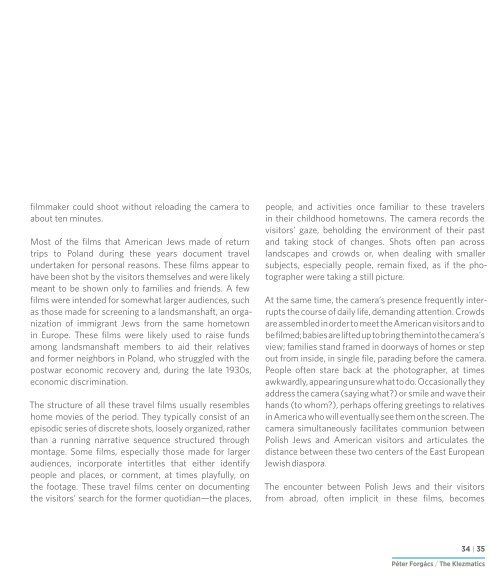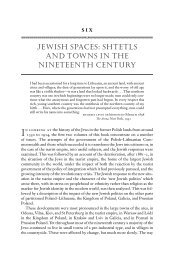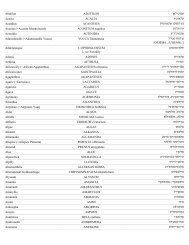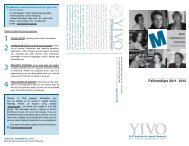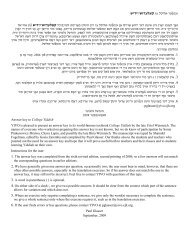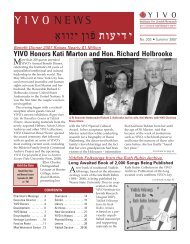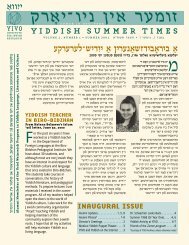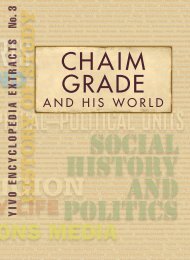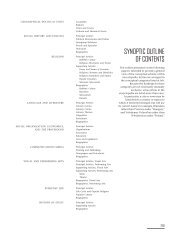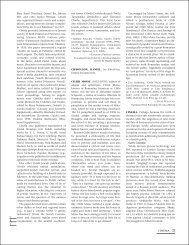Here - YIVO Institute for Jewish Research
Here - YIVO Institute for Jewish Research
Here - YIVO Institute for Jewish Research
You also want an ePaper? Increase the reach of your titles
YUMPU automatically turns print PDFs into web optimized ePapers that Google loves.
filmmaker could shoot without reloading the camera toabout ten minutes.Most of the films that American Jews made of returntrips to Poland during these years document travelundertaken <strong>for</strong> personal reasons. These films appear tohave been shot by the visitors themselves and were likelymeant to be shown only to families and friends. A fewfilms were intended <strong>for</strong> somewhat larger audiences, suchas those made <strong>for</strong> screening to a landsmanshaft, an organizationof immigrant Jews from the same hometownin Europe. These films were likely used to raise fundsamong landsmanshaft members to aid their relativesand <strong>for</strong>mer neighbors in Poland, who struggled with thepostwar economic recovery and, during the late 1930s,economic discrimination.The structure of all these travel films usually resembleshome movies of the period. They typically consist of anepisodic series of discrete shots, loosely organized, ratherthan a running narrative sequence structured throughmontage. Some films, especially those made <strong>for</strong> largeraudiences, incorporate intertitles that either identifypeople and places, or comment, at times playfully, onthe footage. These travel films center on documentingthe visitors’ search <strong>for</strong> the <strong>for</strong>mer quotidian—the places,people, and activities once familiar to these travelersin their childhood hometowns. The camera records thevisitors’ gaze, beholding the environment of their pastand taking stock of changes. Shots often pan acrosslandscapes and crowds or, when dealing with smallersubjects, especially people, remain fixed, as if the photographerwere taking a still picture.At the same time, the camera’s presence frequently interruptsthe course of daily life, demanding attention. Crowdsare assembled in order to meet the American visitors and tobe filmed; babies are lifted up to bring them into the camera’sview; families stand framed in doorways of homes or stepout from inside, in single file, parading be<strong>for</strong>e the camera.People often stare back at the photographer, at timesawkwardly, appearing unsure what to do. Occasionally theyaddress the camera (saying what?) or smile and wave theirhands (to whom?), perhaps offering greetings to relativesin America who will eventually see them on the screen. Thecamera simultaneously facilitates communion betweenPolish Jews and American visitors and articulates thedistance between these two centers of the East European<strong>Jewish</strong> diaspora.The encounter between Polish Jews and their visitorsfrom abroad, often implicit in these films, becomes3435Péter Forgács / The Klezmatics


